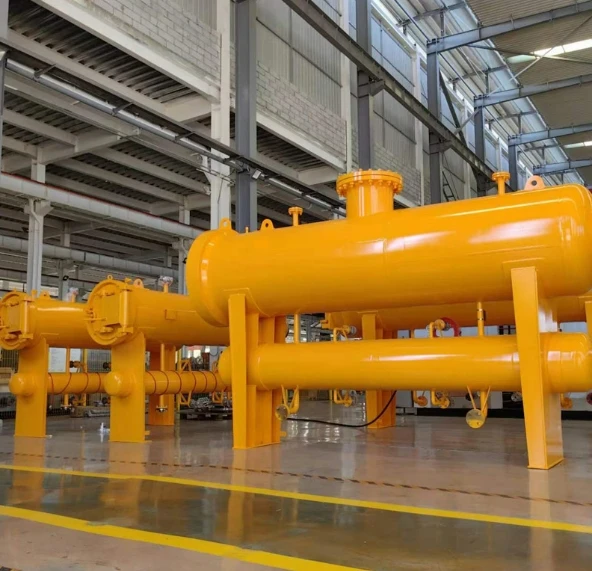
Nov . 06, 2024 02:38
Back to list
Pneumatic Control Valve Functionality in Industrial Automation Systems for Enhanced Performance and Efficiency
Understanding Pneumatic Control Valves Fundamentals and Applications
Pneumatic control valves are essential devices in various industrial processes, playing a crucial role in regulating airflow within pneumatic systems. Their primary function is to manage the flow and pressure of air or gas, ensuring that downstream equipment operates under optimal conditions. This article delves into the workings, types, advantages, and applications of pneumatic control valves, providing insights into their importance in modern industry.
How Pneumatic Control Valves Work
A pneumatic control valve operates by opening, closing, or partially obstructing the flow of air or gas in response to control signals. Typically, these signals come from a control system that monitors and adjusts the valve's position based on specific process requirements. The actuation of a pneumatic valve is generally controlled either manually or automatically via pneumatic or electric actuators.
The core components of a pneumatic control valve include the valve body, actuator, and control mechanism. The valve body houses the flow passage and can come in various configurations, such as globe, ball, or butterfly shapes, each suited for different applications. The actuator is responsible for the valve’s movement, and it can be either single-acting or double-acting. A single-acting actuator uses air pressure to open the valve, while a spring returns it to the closed position. Conversely, a double-acting actuator uses air pressure for both opening and closing, providing greater control and responsiveness.
Types of Pneumatic Control Valves
Pneumatic control valves can be categorized based on their design, operation, and applications
1. Globe Valves Known for their excellent throttling capabilities, globe valves are commonly used in processes that require precise flow control. They offer a high degree of accuracy in regulating flow rates and are suitable for various pressure and temperature conditions.
2. Ball Valves These valves provide a quick and reliable on/off control. The ball within the valve allows for minimal resistance to flow when open, making them ideal for applications where rapid valve operation is required.
3. Butterfly Valves Butterfly valves are compact and lightweight, making them suitable for large-diameter pipes. They allow for quick operation and are often used in systems requiring high flow rates and low pressure drops.
4. Control Valves with Positioners For applications that necessitate more complex control, positioners are integrated with pneumatic control valves to enhance precision and reliability. These devices help adjust the valve based on feedback from the process conditions.
Advantages of Pneumatic Control Valves
pneumatic control valve

Pneumatic control valves offer several advantages, which include
- Speed Pneumatic systems can actuate valves much faster than hydraulic or electric systems, enabling quick process adjustments and improving operational efficiency
.- Simplicity Pneumatic control systems are typically easier to install and maintain compared to their electric counterparts, reducing downtime and costs.
- Safety Pneumatic systems are often preferred in hazardous environments because they do not require electrical components, minimizing the risk of sparks and potential ignition.
- Cost-Effectiveness With lower initial costs and reduced maintenance needs, pneumatic control valves provide a cost-effective solution for many industries.
Applications of Pneumatic Control Valves
Pneumatic control valves are used across a wide range of industries, including
- Manufacturing In manufacturing processes, pneumatic control valves regulate the flow of air to various tools and machines, ensuring efficient and precise operation.
- Food and Beverage In this industry, pneumatic valves help control processes such as packaging, filling, and mixing, where hygiene and precision are vital.
- Pharmaceuticals The pharmaceutical sector relies on pneumatic control valves for maintaining the controlled environments necessary for drug production and processing.
- Water Treatment Pneumatic valves aid in the management of water flow and treatment processes, ensuring compliance with environmental regulations.
In conclusion, pneumatic control valves are an integral part of modern industrial systems, offering speed, efficiency, and safety in pneumatic control applications. With various designs and the ability to meet specific process requirements, these valves play a vital role in enhancing productivity across multiple sectors. Understanding their operation and advantages can help industries optimize their processes and achieve significant operational benefits.
Latest news
-
Safety Valve Spring-Loaded Design Overpressure ProtectionNewsJul.25,2025
-
Precision Voltage Regulator AC5 Accuracy Grade PerformanceNewsJul.25,2025
-
Natural Gas Pressure Regulating Skid Industrial Pipeline ApplicationsNewsJul.25,2025
-
Natural Gas Filter Stainless Steel Mesh Element DesignNewsJul.25,2025
-
Gas Pressure Regulator Valve Direct-Acting Spring-Loaded DesignNewsJul.25,2025
-
Decompression Equipment Multi-Stage Heat Exchange System DesignNewsJul.25,2025

